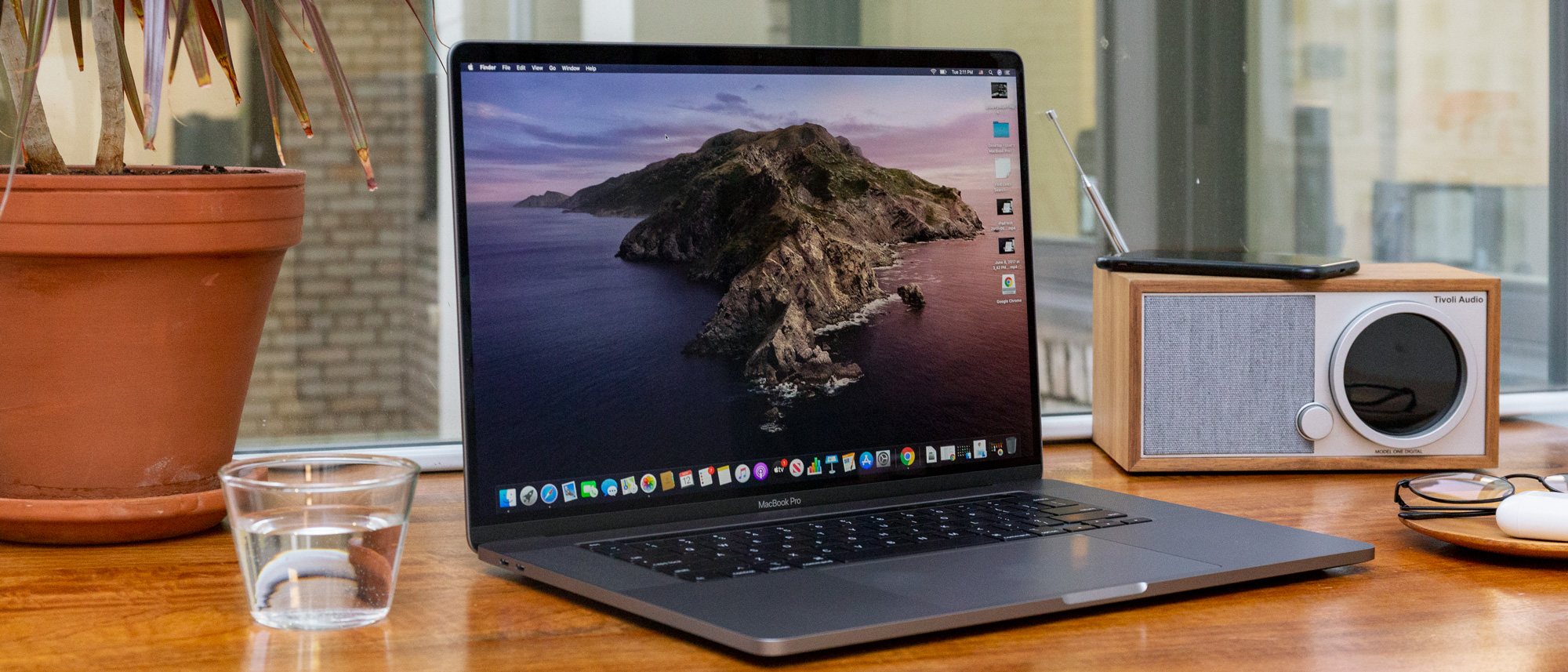Laptop Mag Verdict
A vastly improved keyboard, larger 16-inch display with slimmer bezels and bigger battery make the 16-inch MacBook Pro a compelling option for serious pros.
Pros
- +
Radically improved Magic Keyboard
- +
Immersive 16-inch display with slimmer bezels
- +
Beastly performance
- +
Powerful 6-speaker audio
- +
Nearly 11 hours of battery life
Cons
- -
Display not 4K
- -
No full-size USB port or SD card slot
- -
Pricey
Why you can trust Laptop Mag
A totally new keyboard. A bigger display with thinner bezels. And gobs of power with up to an 8-core Core i9 CPU, 8GB of video RAM and 8TB of storage. The new 16-inch MacBook Pro is a beast, but it’s the improved typing experience that has won me over. The Magic Keyboard is so good that I really hope it trickles down to cheaper MacBooks, pronto.
Starting at $2,399 ($3,899 as tested), the 16-inch MacBook Pro is not cheap — and the port selection has not changed — but it has practically everything creative pros have been hoping for in an Apple laptop, and it is certainly one of the best laptops for power users and one of the best video editing laptops and laptops with best battery life.
16-inch MacBook Pro price and release date
The 16-inch MacBook Pro is available to order now both online and in stores and it was released November 15.
The 16-inch MacBook Pro starts at $2,399 for the standard model with a Core i7 CPU, 16GB of RAM, AMD Radeon 5300M GPU and 512GB SSD. This model replaces the 15-inch MacBook Pro, which started at the same price. The $2,799 model steps you up to the faster Core i9 CPU, faster Radeon Pro 5500M graphics and 1TB SSD.
Our test configuration of the 16-inch MacBook Pro costs a steep $3,899 and includes the same CPU but ups the SSD to 2TB, the RAM to 32GB and the graphics memory from 4GB to 8GB.
Magic keyboard: Now this is more like it
The first thing you’ll notice about the 16-inch MacBook Pro is its large display, but the first thing you’ll want to touch is the new Magic Keyboard. Yup, Apple ditched the controversial Butterfly keyboard on this laptop for a scissor mechanism, and it added a new keycap structure that’s more concave and a rubber dome underneath for support.
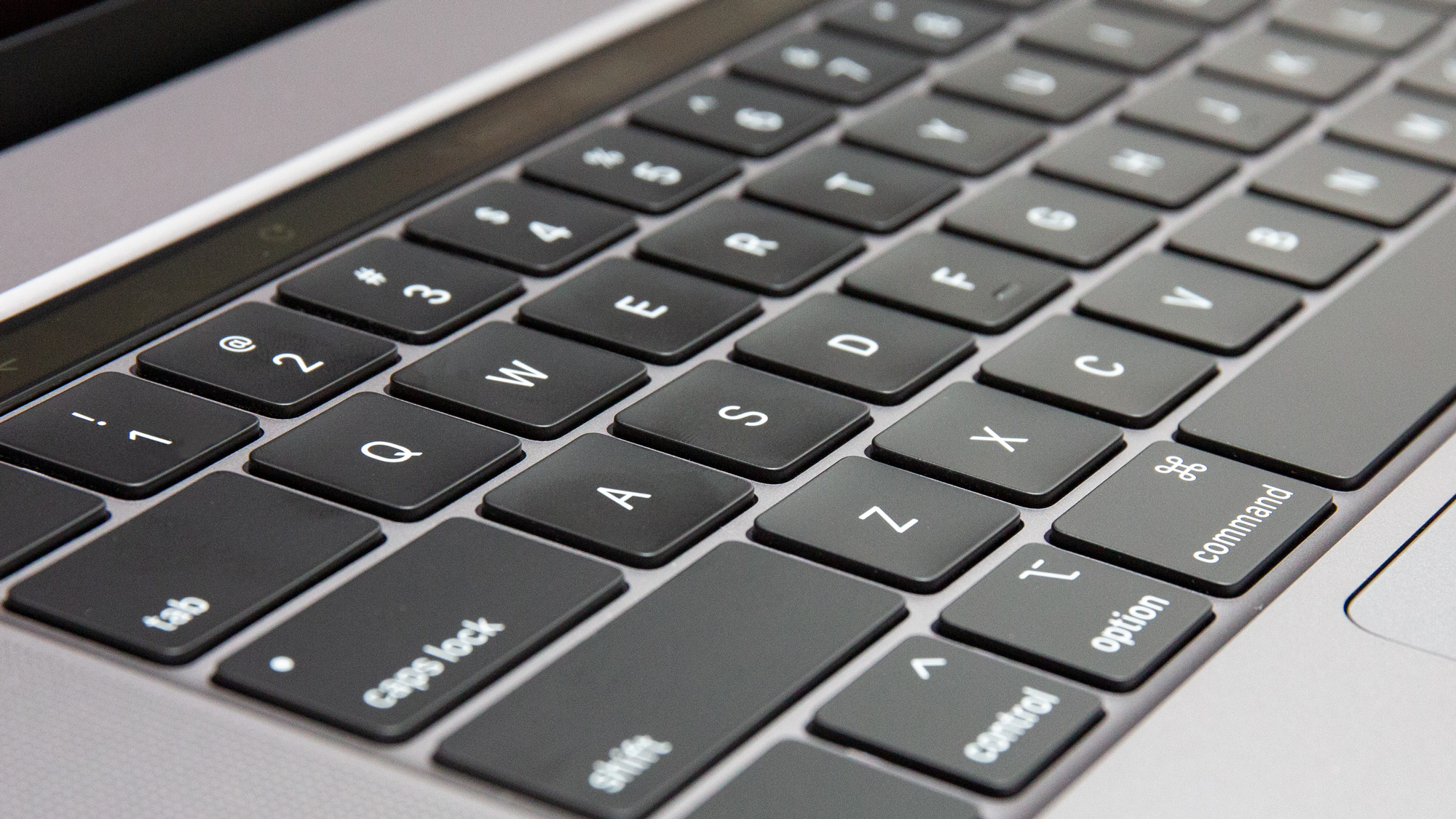
The result is a much-improved keyboard that delivers a better 1mm of travel (compared to less than 0.8mm before). It feels pillowy soft on the way down with a firm click at the bottom, without the rock-hard flatness I hated before. In fact, the 16-inch MacBook Pro’s keyboard feels so comfy that I don’t want to go back to my 13-inch MacBook Pro.
Sign up to receive The Snapshot, a free special dispatch from Laptop Mag, in your inbox.
On the 10fastfingers.com typing test, I reached as high as 79 words per minute with a 97% accuracy rating. I usually get in the 70 to 72 wpm range.
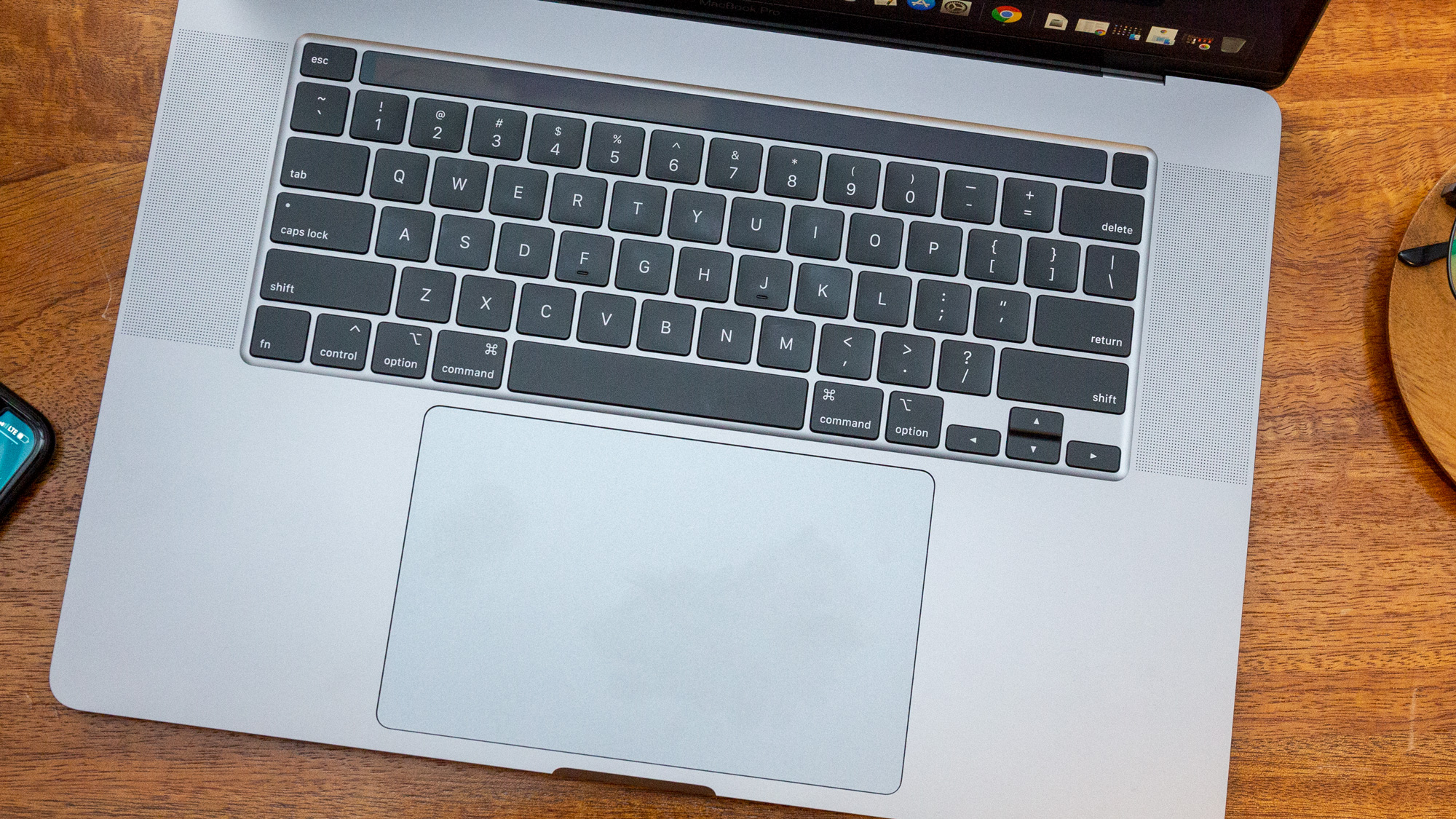
Apple also listened to customers by adding back an Escape key and an inverted T arrow key setup so you can move the cursor more easily by feel. Yes, the Touch Bar is shrunken on this MacBook Pro, but I don’t mind.
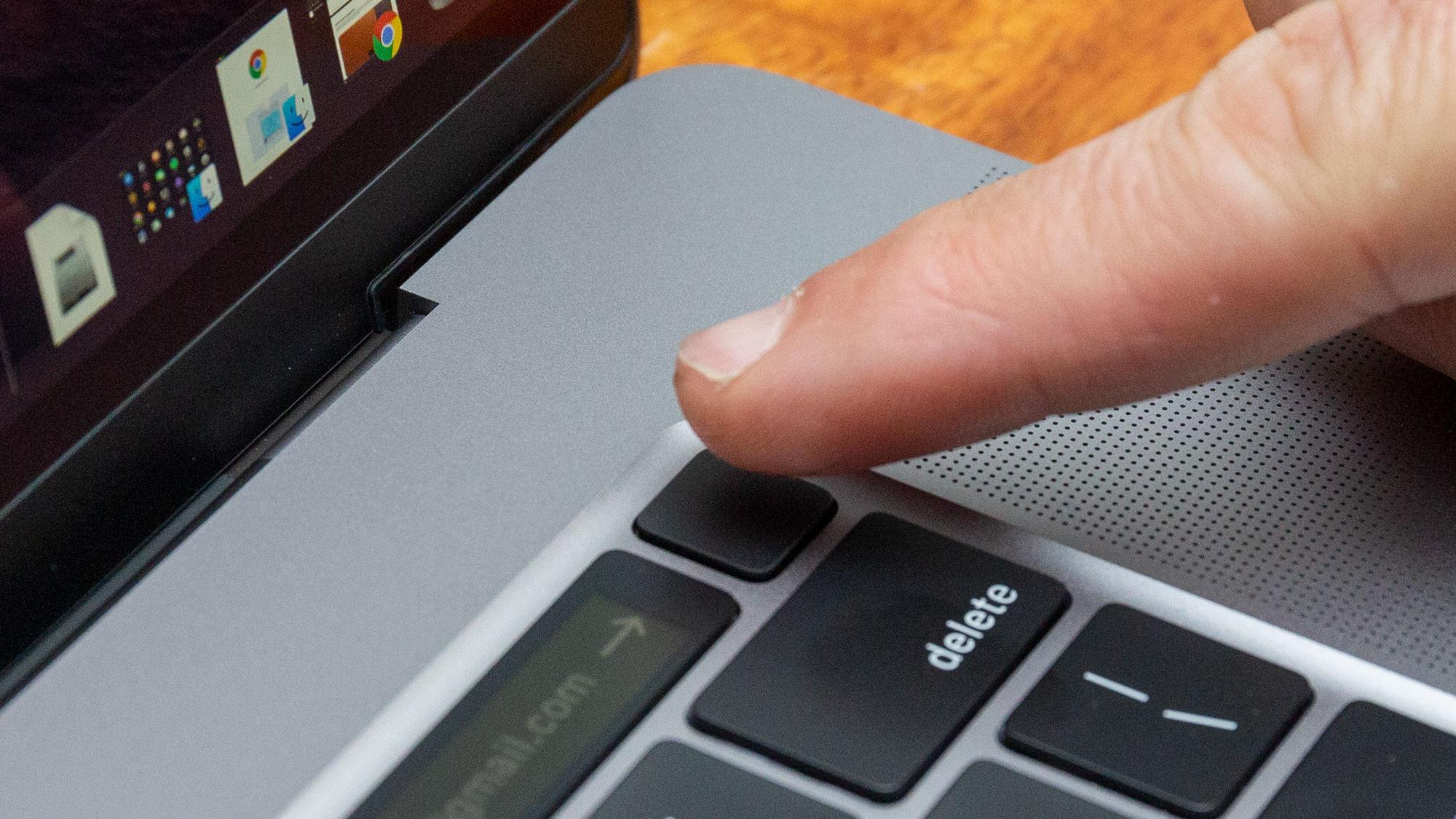
16-inch MacBook Pro display: More pixels, less bezels
Not surprisingly, this is one of the brightest and most colorful panels around. The 16-inch screen on the MacBook Pro packs a fairly resolution of 3072 x 1920. This is not a 4K screen, though. Apple likely opted for this resolution to save on battery life, but I still think professionals would prefer a 4K option.
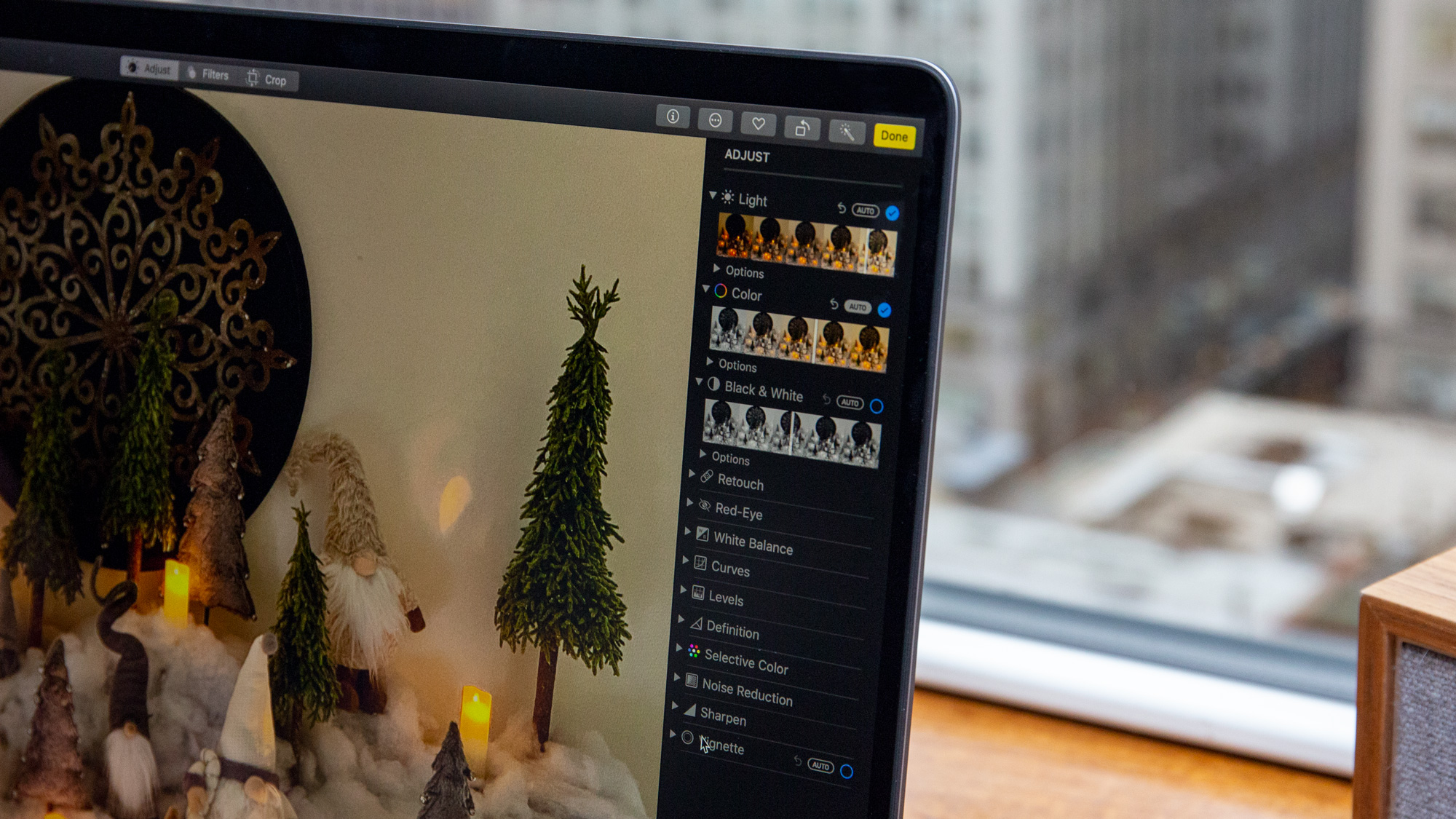
The slimmer borders makes content feel more immersive, whether you’re editing video or binge watching shows. And true pros will appreciate the ability to change the refresh rate on the display. When watching a trailer for The Mandalorian, I could make out the fine vents on the dirtied Storm Trooper helmets mounted on spikes.
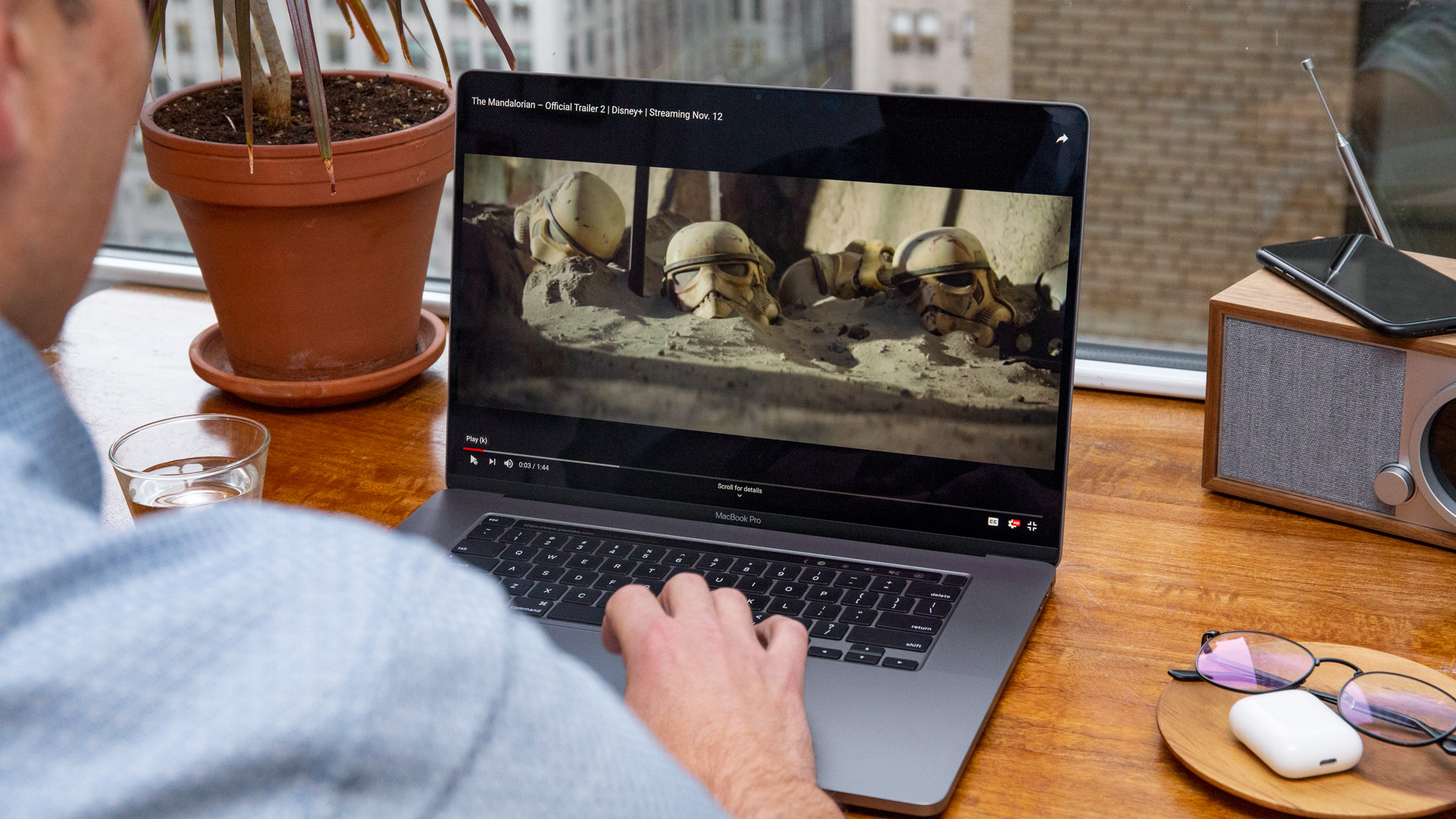
On our lab tests, the 16-inch MacBook Pro's display registered 429 nits, which is very bright but below Apple's 500-nit rating for the screen. The OLED panel on the Dell XPS 15 reached 626 nits, and the non-OLED 4K display on that Dell notebook hit 418 nits. The HP Envy x360 15 with OLED was also very bright at 483 nits, while the Razer Blade Pro 17 averaged only 267 nits.
The 16-inch MacBook Pro's screen can reproduce 113.9% of the sRGB color gamut, which is good. However, the OLED and non-OLED version of the XPS 15 scored 239% and 210%, respectively. The OLED version of the HP Envy x360 reached 258%.
The panel on the 16-inch MacBook Pro is one of the most accurate around, as it turned in a Delta-E score of 0.27. A score of 0 is perfect.
Design: Similar footprint but a bit heftier
The 16-inch MacBook Pro looks very much like other MacBook Pros we’ve reviewed, complete with a comically large touchpad and a solid but unexciting aluminum design in your choice of two colors: Silver and Space gray.

The only notable difference between this and the 15-inch MacBook is that the newed model has narrower bezels on the sides, thought the top bezel is relatively thick compared to systems like the Dell XPS 15.

The 16-inch MacBook Pro weighs 4.3 pounds, compared to 4 pounds for the previous 15-inch MacBook Pro. The new Pro measures 14.1 x 9.7 x 0.6 inches, compared to 13.8 x 9.5 x 0.6 inches for its predecessor. The XPS 15 weighs 4.5 pounds and measures 1.1 x 9.3 x 0.5-0.7 inches.
By comparison, the 15-inch version of the HP Spectre x360 15 is also heavier at 4.5 pounds, but it has a touch screen and rotating hinge. The Razer Blade Pro 17 weighs in at 6.1 pounds with its 17-inch screen.
Killer sound, killer mics
The audio from the 16-inch MacBook Pro is even more impressive than the visuals. There’s a 6-speaker sound system on board with force-cancelling woofers. This system also offers beefier bass that’s half an octave deeper.

You get amazing sound quality without the distortion or vibration that can plague other laptops. When I fired up Lizzo’s Good as Hell on Spotify and maxed out the volume, the 16-inch MacBook Pro filled our video studio with her soaring vocals.
I then played The Mandalorian trailer, and the audio blew me away. The soundtrack had a thunderous base, and yet the laser fire blasts were still so powerful I felt like they were going to come through the screen.
If you create content, the 16-inch MacBook Pro sports a studio-quality, 3-mic array that’s designed to rival the best dedicated Yeti mics out there. There’s 40% less hiss, so you should feel comfortable recording podcasts and definitely feel more confident when you’re on conference calls.
I recorded one voice memo on the 16-inch MacBook Pro and another the 13-inch Pro, and the former did a better job minimizing background noise and the lower register in my voice was much more pronounced.
I also tried something I would never try with another laptop; I called into Cheddar for a video appearance to talk about the Motorola Razr, and I didn't use a headset. The interview went off without a hitch, and my audio came through loud and clear.
16-inch MacBook Pro specs and performance
Price: From $2,399
CPU: 9th gen Core i7, 9th Gen Core i9
RAM: 16GB (up to 64GB)
Storage: 512GB to 8TB
GPU: AMD Radeon Pro 5300M (4GB), Radeon Pro 5500M (up to 8GB)
Display: 16 inches (2072 x 1920 pixels)
Battery: 100-watt-hour up to 11 hours
Size: 14.1 x 9.7 x 0.64 inches
Weight: 4.3 pounds
Ok, so what about speed? The 16-inch MacBook Pro is one of the most powerful laptops period with your choice of 6-core Core i7 processor or an 8-core Core i9 CPU. You get 16GB of RAM to start but it can accommodate up to 64GB of memory. And there’s 512GB of SSD storage that’s configurable up to 8TB. No, that’s not a typo.
MORE: Best Laptops of 2019
On Geekbench 5, which measures overall performance, the 16-inch MacBook Pro scored 7,250, which is a bit lower than the 7,584 from the Dell XPS 15 (with a 2.4-GHz Core i9 processor, 32GB of RAM and Nvidia GeForce GTX 1650 GPU.
The 16-inch MacBook Pro should make quick work of video editing projects. It took the laptop only 8 minutes to transcode a 6.5GB 4K video to 1080p, which is the same amount of time the Dell XPS 15 took. The Razer Blade Pro 17 took a longer 10:39, but that configuration we tested had a slower Core i7 CPU.
To evaluate the SSD on the 16-inch MacBook Pro, we used the Blackmagic Disk Speed Test. The 16-inch MacBook Pro turned in a write speed 2,224 MBps and a read speed of 2,116, while the MacBook Pro sped ahead with a score of 2,805/2540 MBps for write and read.
On the graphics front, the 16-inch MacBook Pro should be able to handle any workload with ease. The AMD Radeon Pro 5300M is the starting GPU but you can upgrade to the Radeon 5500M and max out with 8GB of video RAM, which is what our review model has.
While we don't consider this a gaming laptop, we tested its prowess using The Rise of the Tomb Raider game benchmark. The 16-inch MacBook Pro turned in a pretty good frame rate of 27.2 fps with the resolution set to 1920 x 1200 at the very high graphics preset.
The Dell XPS 15 notched 19.54 fps with the same preset. However, we noticed that the texture quality setting wasn't set to very high on the MacBook Pro by default as it was on the Dell. When we did that, the MacBook Pro's frame rate was practically identical to the XPS 15's mark at 19.6 fps.
Battery life
Even with all of this power, the 16-inch MacBook Pro should provide plenty of endurance. It ships with a 100-watt-hour-battery. That’s 16 additional watt hours than before, which Apple says will provide up to 11 hours of web surfing time.
On the Laptop Mag Battery Test, which involves continuous web surfing at 150 nits of screen brightness, the 16-inch MacBook Pro lasted 10 hours and 55 minutes. That's among the best run times we've seen for a big-screen laptop.
By comparison, the non-OLED, 4K version of the Dell XPS 13 lasted 8:48, and the OLED version lasted 8:07. The OLED version of the Spectre x360 15 lasted a meager 7 hours and 46 minutes, and the non-OLED Spectre x360 lasted 8:09. The Razer Blade Pro 17 is not even the same ballpark at 3:12.
Bottom line

The 16-inch MacBook Pro is the best Apple laptop in years. The Magic keyboard feels a lot more comfortable than any Butterfly MacBook keyboard I’ve tried. I also appreciate the slimmer bezels, sharper display and especially the booming sound. Another key selling point for pros is the nearly 11 hours of battery life, which blows away all of Apple's closest competitors.
What don’t I like? This machine is a bit heavier and thicker than the 15-inch MacBook Pro. I also would have liked to see Face ID for unlocking the system, even though Touch ID is pretty easy to use. And some pros will lament the lack of a 4K display and the continued lack of full-size USB ports and a memory card slot.
If you like Windows, the Dell XPS 15 is a great alternative, as it costs about $900 less than the 16-inch MacBook when similar configured, even though it doesn't last as long on a charge has mediocre audio by comparison.
But if you're in the Apple camp, the 16-inch MacBook Pro is worth the splurge if you need a big screen. For everyone else, I'm hoping Apple brings its Magic Keyboard to the rest of its lineup sooner than later.
MacBook Pro 16-inch (2019) Specs
| Size | 14.1 x 9.7 x 0.64 inches |
| Display | 16 inches (2072 x 1920 pixels) |
| CPU | 9th gen Core i7, 9th Gen Core i9 |
| Price | From $2,399 |
| GPU | AMD Radeon Pro 5300M (4GB), Radeon Pro 5500M (up to 8GB) |
| Battery | 100-watt-hour up to 11 hours |
| Weight | 4.3 pounds |
| Storage | 512GB to 8TB |
| RAM | 16GB (up to 64GB) |

